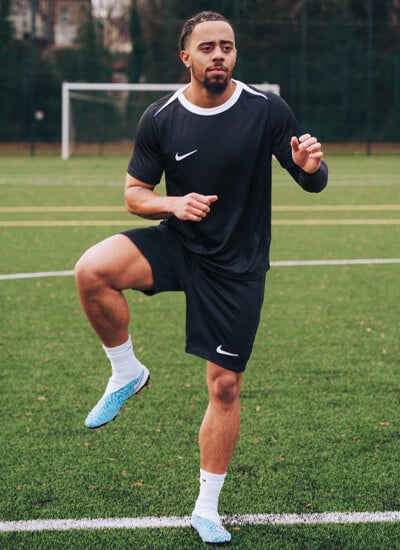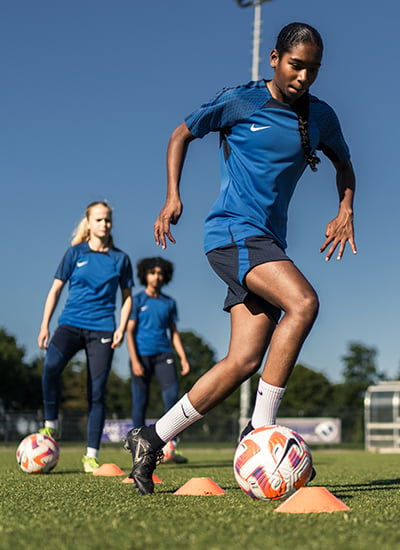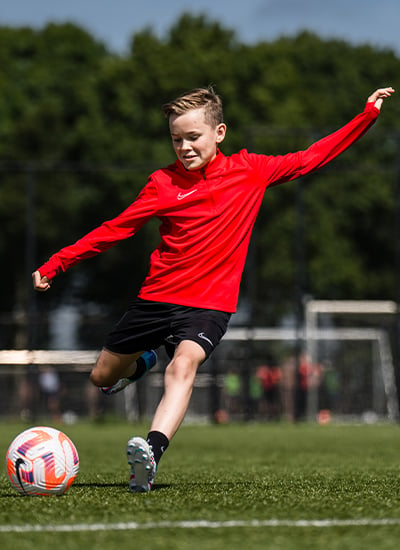Batting is one of the core positions on the cricket pitch. Whether you’re a newbie, or looking for a crash-course refresher, this guide will show you the ropes!
How To Hold A Cricket Bat
So, you’re up on the cricket pitch, bat in your hand. And, as the bowler takes aim, you keep second-guessing yourself about how exactly you’re holding your cricket
… Okay, there’s a little hyperbole in this example. Chances are that you’ll have had at least a little practice on proper bat etiquette before you start standing in front of your stumps.
Still, everyone starts from somewhere. And it never hurts to have a refresher, even if you have held a cricket bat before.
This guide gives you a thorough breakdown of how you should be holding your cricket bat. Not only that, we’ve also got some great tips and tricks to try out for yourself next time you’re out on the practice pitch!
Cricket Bat Grip Styles
The first thing you need to learn about holding cricket bats is that there is no single right way to hold one.
While there is obviously bad cricket bat etiquette that you should avoid (more on that at the end), there are several grip styles that are used by cricket players, professional and amateur, across the world.
These are the most well-known and practised ways to hold your cricket bat:
- Conventional/Normal V-Grip
- Closed Face Grip
- Open Face Grip
- Donald Bradman Grip
- Knott Grip
Conventional V-Grip
This is the most common grip style out there. If you’re starting in cricket, this is the first one that you should learn!
Follow these steps if you want to learn how to hold this grip:
- Lay your bat on the floor, with the flat face on the ground, and the rounded back pointed upwards.
- Hold your hands in front of you, creating a V-shape between your thumbs and forefingers. Your hands should be aligned in the same direction
- If you’re left-handed, have your left hand above your right hand. If you’re right-handed, have your right hand up first.
- Keeping your hands in this V-shape, bend down and place your hands on the back handle. They should be over the back of the grip and still have a small gap between them.
- Now, you can wrap your hands around the bat, and pick it up.
By the end, the flat face of your bat should be facing down, and can will be pointed in the direction of the 1st slip. Your bottom hand can also be used to help play shots from both sides, so long as you keep the grip not too tight!
This grip style helps you cover all shots from all sides of the wickets. It’s why even experienced players, that know how to use an open or closed-face grip well, will often come back to this technique. It may not have many strengths over advanced grips, but it also has no weaknesses, either.
What can we say? It’s tough to beat the classics!
Open Face Grip
If you have the conventional V-grip down, then you can start to move on to other styles. For us, the open-face grip is the perfect next step for cricketers to learn!
- First, follow the steps of the V-grip position that we’ve covered.
- Next, simply rotate the bat in your hand, until the bat is facing more upwards towards the off side, rather than straight down.
And that’s it. As we said, it’s a pretty simple grip to learn!
In terms of grip variants, this is an easy one to pick up. It’s not too different from the classic V-grip, but it has some great potential when it comes to hitting the ball off-side and getting those solid full-delivery hits to the off-side of the wicket.
However, this emphasis on the offside comes at a cost. You’ll be seriously hampered at playing balls through the leg side, and a skilled bowler can take advantage of the different directions to bowl you out.
With that in mind, it’s best to move into this grip as the bowler approaches, and not to use it for every bowl that comes your way.
Closed Face Grip
Also known as the O-grip, the closed-face grip is a pretty rare grip to use. It’s one that usually develops for batters as they slowly evolve their style, and find their comfortable spot when gripping their bat.
- Start with the V-grip, then tighten the grip on the bottom hand.
It’s a simple change, but one that can dramatically change the outcome of a swing. Rather than having a looser grip with your bottom hand, you can now add extra power to your deliveries towards the leg side. It’s a lot like a reverse-open face grip (hence the name).
As we’ve just mentioned, that extra grip on your handle helps you put more power into a single direction. However, it makes changing your grip and direction a lot trickier, especially for your off side.
Donald Bradman Grip
While the last few grips have had pretty normal names, this is the first one that we’ve covered that is named after a cricketer!
This is a grip style that was made famous by the titular Don Bradman, one of, if not the, best batsman in the history of cricket. Part of the legacy that he carved out in the sport (outside of setting many of Australia’s cricketing records in the 1930s and 40s) was his unique grip style.
- Grab the bat in a traditional V-grip style.
- Then rotate your bottom hand so that the back of the hand is facing down.
- At the same time, rotate your top hand until it is directly behind your bat's handle.
This will point your bat towards 2nd and 3rd slip once you are swinging. This grip is also used with a slight circular movement that Bradman would also use.
Now, this is a grip style that seems simple at first, but is very hard to pull off in practice. It’s phenomenal at getting your shots out on the leg side and forces your wrists to rotate as the bat contacts the ball. This makes the ball much more likely to roll rather than go in the air, saving you from being caught out.
However, like with the closed-face grip, you’re going to find covering the off side very difficult with this grip. Plus, it’s a very different grip that will feel odd in your hands without proper practice, so it’s not something that you can just ‘pick up’ in a match.
There’s a reason that so few professional cricketers have used this in themselves.
Knott Grip
Finally, we have our last main grip style that you’ll find on the pitch!
Named after another legend of cricket history, the legendary wicketkeeper Alan Knott, the batting style named after him is just as out-there as the man it is inspired by
- Once again, start with the traditional V-grip.
- Then, rotate each hand until the back of both hands are pointed in the same direction.
- Your wrists will turn in opposite directions, like they’re on a hinge.
This is a grip that is perfect for hitting shots that are unpredictable and bounce a lot, making it tough for fielders to react. However, the awkward hand placement does mean that you’re kind of limiting just how much power you can put behind your swings. You’ll struggle to hit those outer boundaries with this style.
But if you’re a batsman who prefers to score their runs in singles and doubles, this might be the grip style for you. Of course, that’s once you get a grip of… well, the grip!
Other Tips & Advice
So, those are the most well-known betting styles out there and should give you plenty to practice with.
Before you start stat swinging away, though, make sure to keep these other tips and tricks in mind when out on the pitch.
Adjust Bat Handle Height
One detail batters may be conscious of at first is where they’re holding the bat on the grip.
Unfortunately, there’s no simple one-way to hold the bat. Luckily, however, this does mean that you get to decide where on the bat is most comfortable for you.
If you’re struggling to find a spot to start from, start holding your bat in the centre of the grip, and make slight adjustments depending on what is most comfortable for you.
Keep Your Cool
You might find early on that you’re just not hitting the balls being bowled to you, and it can be tempting to give your swings some more oomph.
If you’re feeling that itch, stop for a second. You’ll only find that your form deteriorates as you get more annoyed, and you run a higher chance of damaging your bat, or even yourself.
Keep your cool, remember your technique, and work back from there where you need to.
Final Notes
So, there you have it.
There are tons of ways to hold your cricket bat, and you’ll no doubt find your favourite eventually. While we do recommend starting with the V-grip, you may find that little changes to your stance and technique help you.
Maybe you’ll make the next Don Bradman grip doing this? Who Knows!
Just make sure that you’re giving each one plenty of practice before you take them out on the pitch with you!
Related guides
Best adidas Football Kits by Colour
Summer 2020 Match Kit Guide: adidas








